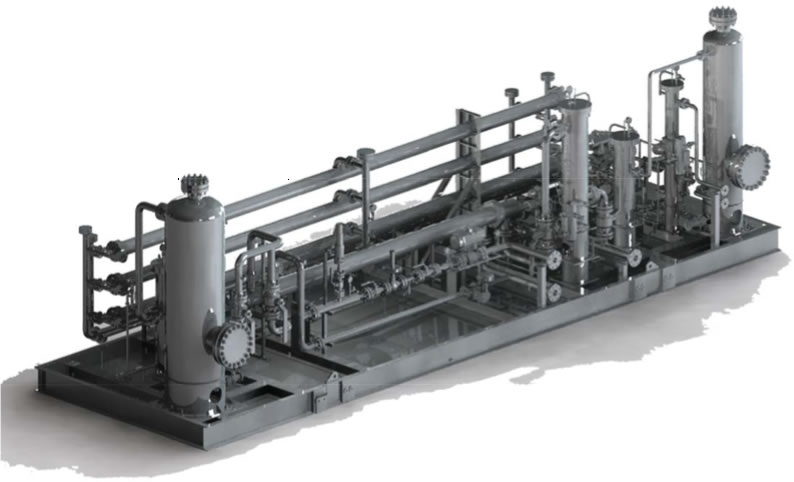CO2 Removal System Using Membranes
Gas treating membrane systems provide a safe and efficient option for water vapor and carbon dioxide removal from natural gas, especially in remote locations. Membrane systems are extremely adaptable to various gas volumes, CO2 concentrations, and/or product-gas specifications. A spiral wound cellulose acetate membrane unit offers the greatest efficiency per Mcf of product removed compared to any other competing CO2 removal system.

Benefits of using Membranes for Removing Carbon Dioxide (CO2)
- Versatility
- Adaptability
- Environmentally friendly
- Easy to operate
When to consider using Membrane Separation
- Operating pressures over 450 psig
- Electricity availability
- Space and weight restrictions (i.e. offshore)
Newpoint has utilized membrane technology extensively and strongly recommends the process for specific applications associated with carbon dioxide removal from natural gas.
CO2 Removal Process Description
Carbon dioxide membranes operate on the principle of selective permeation. Each gas component has a specific permeation rate. The rate of permeation is determined by the rate which a component dissolves into the membrane surface and the rate at which it diffuses through the membrane.
The components with higher permeation rates (such as CO2, H2, and H2S) will permeate faster through the membrane module than components with lower permeation rates (such as N2, C1, C2 and heavier hydrocarbons). For example, carbon dioxide is a “fast,” more permeable, gas than methane. When a stream consisting of these two gases contacts the membrane, the carbon dioxide will permeate through the fiber at a faster rate than the methane. Thus, the feed stream is separated into a methane-rich (residual) stream on the exterior of the membrane fiber and a carbon dioxide-rich (permeate) stream on the interior of the membrane fiber.
The primary driving force of the separation is the differential partial pressure of the permeating component. Therefore, the pressure difference between the feed gas and permeate gas and the concentration of the permeating component determine the product purity and the amount of carbon dioxide membrane surface required.

